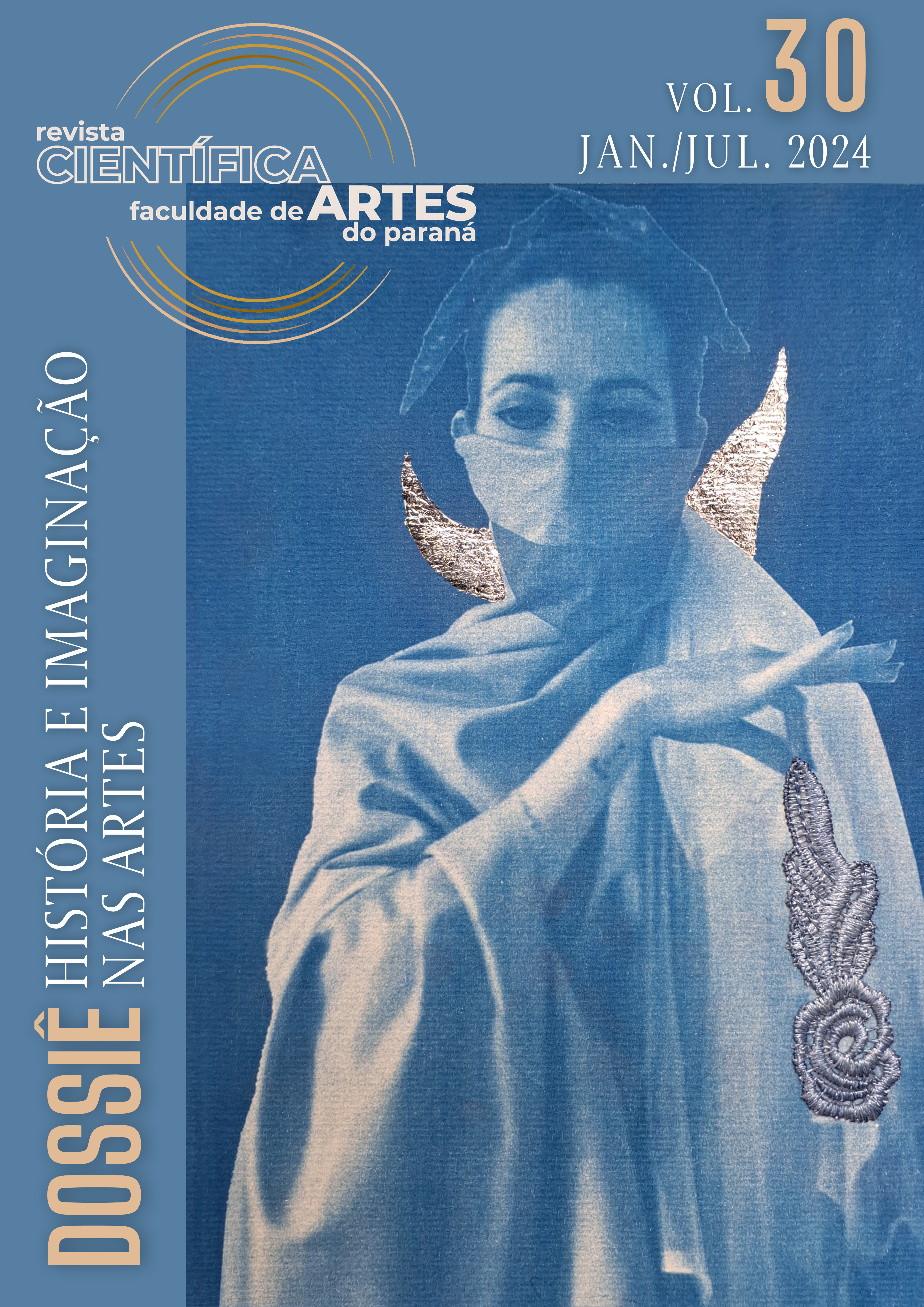MONTAGE OF HETEROGENEOUS TIMES IN EDUARDO COUTINHO'S O FIO DA MEMÓRIA: NO CENTENÁRIO DA ABOLIÇÃO (1991)
DOI:
https://doi.org/10.33871/19805071.2024.30.1.8844Keywords:
documentary, memory, Eduardo Coutinho, O Fio da MemóriaAbstract
Our goal in this essay is to observe the narrative layers, heterogeneous times and the strategies employed for the discourse of memory and oblivion present in the second feature-length documentary film made by Eduardo Coutinho, O Fio da Memória: no centenário da abolição (1991). We initially assume that the film contains exercises from the director of a documentary film form even before pointing to a certain style developed by him throughout his career. The documentary's theme is around exclusion, racism, among others, and the way such themes are presented, can be considered embryonic in the author's work. Among these, choices such as: the strategy for creating the story based on interviews, the use of diegetic songs chosen and performed by the characters, the presence of religious syncretism and some signs of the film's production through the presence of the team can be highlighted. Even though this work was made by order, these are elements already present that identify this author in a unique way.
Downloads
References
BABILÔNIA 2000. Direção: Eduardo Coutinho. Produção: Eduardo Coutinho; Donald K. Ranvaud, Rio de Janeiro. Empresa produtora: CECIP; Videofilmes, 2000. 35mm, COR, 80min, 2.195m, 24q.
BENJAMIN, Walter. Sobre o conceito da História. In.: BENJAMIN, Walter. Ma-gia e técnica, arte e política: ensaios sobre a literatura e história da cultura. São Paulo: Brasiliense, 2012
BERNARDET, Jean-Claude. Cineastas e imagens do povo. São Paulo: Companhia das Letras, 2003.
BEZERRA, Claudio. A personagem no documentário de Eduardo Coutinho. Campinas: Editora Papirus, 2014.
CABRA MARCADO PARA MORRER. Direção: Eduardo Coutinho. Produção: Eduardo Coutinho e Zelito Viana, Rio de Janeiro. Empresa(s) produtora(s): CPC - Centro Popular de Cultura da UNE - União Nacional dos Estudantes; MPC - Movimento de Cultura Popular de Pernambuco; Map, 1964-1984. 35mm, COR e P&B, 119min, 3.290m, 24q.
COLI, Jorge. O que é a arte. São Paulo: Editora Brasiliense, 2001.
CORTINA, Adela. Aporofobia, a Aversão ao Pobre: um Desafio Para a De-mocracia. São Paulo: Contracorrente, 2020.
COUTO, José Geraldo. O cinema segundo Eduardo Coutinho. São Paulo, 2013. Recuperado de: <https://outraspalavras.net/poeticas/o-cinema-segundo-coutinho/>, acesso em 23 de agosto de 2023.
DIDI-HUBERMAN, Georges. Diante do tempo: História da arte e anacronismo das imagens. Belo Horizonte: Editora UFMG, 2015.
GAGNEBIN, Jean Marie. Lembrar escrever esquecer. São Paulo: Ed. 34, 2006.
GONZALEZ, Lélia. A questão negra no Brasil. In.: GONZALEZ, Lélia. Por um feminismo afro-latino-americano. Rio de Janeiro: Zahar, 2020.
LINS, Consuelo. Eduardo Coutinho, linguista selvagem do documentário bra-sileiro. Galaxia (São Paulo, Online), n. 31, p. 41-53, abr. 2016. Recuperado de <http://dx.doi.org/10.1590/1982-25542016123816>, acesso em 23 de junho de 2023.
O FIO DA MEMÓRIA: NO CENTENÁRIO DA ABOLIÇÃO. Direção: Eduardo Coutinho Produção: Eduardo Escorel e Lauro Escorel Filho Cidade: Rio de Janeiro, Empresa produtora Cinefilmes Ltda.; FUNARJ - Fundação de Artes do Estado do Rio de Janeiro e coprodução TVE - Television Española S.A., 1991. 35mm, COR, Son, 120min, 2.620m, 24q.
RAMOS, Fernão. Mas afinal o que é mesmo o documentário? São Paulo: Senac. 2008.
RICOEUR, Paul. A memória, a história, o esquecimento. Campinas: Ed. da Unicamp, 2007.
RICOEUR, Paul. Percurso do reconhecimento. São Paulo: Loyola, 2006.
SANTO FORTE. Direção: Eduardo Coutinho. Produção: Claudius Ceccon; Dinah Frotté; Elcimar de Oliveira, Rio de Janeiro. Empresa produtora: CECIP - Centro de Criação de Imagem Popular,1999. 35mm, COR, 80min, 2.195m, 24q.
SOUZA, Jessé. A classe média no espelho: sua história, seus sonhos e ilusões, sua realidade. Rio de Janeiro: Estação Brasil, 2018.
ZALUAR, Amelia. A casa da Flor – Uma arquitetura poética. Rio de Janeiro, [s.d.]. http://blogameliazaluar.blogspot.com/p/casa-da-flor.html
Downloads
Published
How to Cite
Issue
Section
License
The authors retain the copyright, when licensing their production in Revista Científica/FAP, which is licensed under a Creative Commons license. When submitting the article, and upon acceptance, the author assigns his copyright for publication in that journal.
Readers can download, print and use the articles published in the journal, as long as there is always an explicit mention of the author (s) and the Revista Científica/FAP, no changes to the original work are allowed. When submitting an article to Revista Científica/FAP and after its being accepted for publication, the authors allow, without remuneration, to pass the following rights to the Journal: the first edition rights and the authorization for the editorial team to transfer, according to their judgment, this article and its metadata to indexing and reference services.


